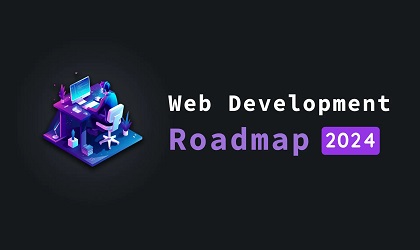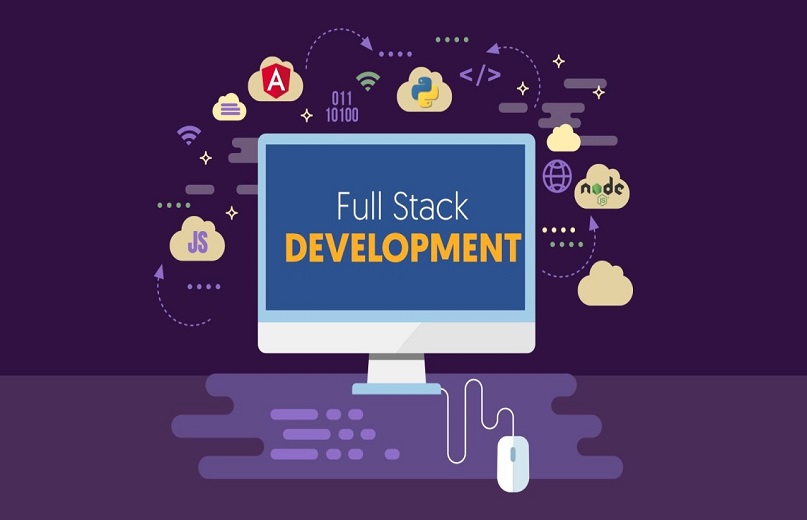In the digital age, web development is one of the most sought-after skills. From building websites and web applications to creating interactive user experiences, the demand for web developers continues to grow. However, becoming a proficient web developer requires learning a wide range of technologies and tools. A structured Web Development Roadmap helps aspiring developers navigate this journey effectively.
This article outlines the key steps and technologies involved in the Web Development Roadmap, providing a clear path for those looking to enter the field.

1. Understanding Web Development Roadmap Basics
Before diving into specific technologies, itâs important to understand the basic principles of web development. Web development is typically divided into two main categories: front-end development and back-end development. Full-stack developers are those who are proficient in both areas.
- Front-End Development: Focuses on the client side, which is everything the user interacts with in the browser, such as layout, design, and user interface.
- Back-End Development: Focuses on the server side, which involves the server, database, and server-side applications that support the front-end.
2. Learning HTML, CSS, and JavaScript
The foundation of web development starts with HTML, CSS, and JavaScript, the core technologies for building websites.
- HTML (HyperText Markup Language): HTML is the backbone of any web page. It structures the content and elements of a webpage, such as headings, paragraphs, and images.
- CSS (Cascading Style Sheets): CSS is used to style and design the HTML elements. It controls the layout, colors, fonts, and responsiveness of the webpage, making it visually appealing.
- JavaScript: JavaScript adds interactivity to websites. From form validation to dynamic page content, JavaScript allows developers to create responsive and interactive elements on a webpage.
3. Version Control (Git & GitHub)
As you begin building projects, understanding version control is essential. Git is a version control system that tracks changes in code, allowing developers to collaborate on projects without overwriting each otherâs work. GitHub is a platform where developers can host their code, collaborate with others, and showcase their projects.
4. Responsive Web Design
In todayâs mobile-first world, websites must be responsive, meaning they adapt to different screen sizes and devices. Learning CSS frameworks like Bootstrap or Foundation will help in creating responsive designs quickly. Additionally, mastering media queries and fluid layouts is key to ensuring a seamless experience across all devices.
5. Front-End Frameworks and Libraries
Once you’re comfortable with HTML, CSS, and JavaScript, you can start exploring popular JavaScript frameworks and libraries to speed up development. This step is crucial in the Web Development Roadmap:
- React: A popular JavaScript library for building user interfaces, especially single-page applications.
- Vue.js: A progressive JavaScript framework used for building UIs and single-page applications.
- Angular: A TypeScript-based framework developed by Google, commonly used for building large-scale applications.
These tools allow developers to write cleaner, modular code and improve productivity.
6. Learning Back-End Development
To become a full-stack developer, youâll need to understand back-end development. This involves server-side logic, database management, and ensuring the website functions as expected.
- Node.js: A JavaScript runtime that allows you to build the server side of applications using JavaScript.
- Express.js: A web application framework for Node.js that simplifies the development of server-side applications.
- Databases: Learning how to interact with databases is crucial. Start with SQL databases like MySQL or PostgreSQL, or NoSQL databases like MongoDB.
7. API Integration
Web applications often need to communicate with other services or applications. This is where APIs (Application Programming Interfaces) come in. Learn how to interact with APIs by sending requests and receiving data from external services. Familiarize yourself with RESTful APIs and GraphQL for handling data on the web.
8. Authentication and Security
Security is a critical aspect of web development. Youâll need to understand how to implement authentication (verifying user identity) and authorization (granting access to resources) using technologies like OAuth, JWT (JSON Web Tokens), and Session/Cookie management. Additionally, learn about common security vulnerabilities like SQL injection, cross-site scripting (XSS), and cross-site request forgery (CSRF) to ensure your applications are secure.
9. Web Development Tools and Environment
To increase productivity, developers use a variety of tools:
- Text Editors/IDEs: Tools like VS Code or Sublime Text are popular for writing code.
- Package Managers: NPM (Node Package Manager) or Yarn are used to manage project dependencies.
- Task Runners: Tools like Gulp or Webpack help automate tasks like minifying files, compiling code, and optimizing assets.
10. Deployment and Hosting
Once your website or web application is ready, you need to deploy it online. Learn about cloud platforms like Heroku, Netlify, or Amazon Web Services (AWS) for hosting web applications. Youâll also need to understand concepts like CI/CD (Continuous Integration/Continuous Deployment) to automate the deployment process.
11. Continuous Learning and Building Projects
Web development is a rapidly evolving field, so continuous learning is key to staying up-to-date with the latest technologies and trends. Building real-world projects is the best way to solidify your skills. You can also participate in open-source projects on GitHub, contribute to coding communities, and take part in hackathons to improve your expertise.
Conclusion
The Web Development Roadmap is a comprehensive guide that outlines the essential skills and tools needed to become a proficient web developer. From mastering front-end technologies like HTML, CSS, and JavaScript to understanding back-end development with Node.js and databases, this roadmap provides a clear path for those looking to enter the world of web development.
By following this roadmap and continuously learning, you can develop the skills needed to build dynamic, responsive websites and web applications that meet the demands of todayâs digital landscape. Whether you aim to become a front-end developer, back-end developer, or full-stack developer, the opportunities in web development are vast and rewarding.



